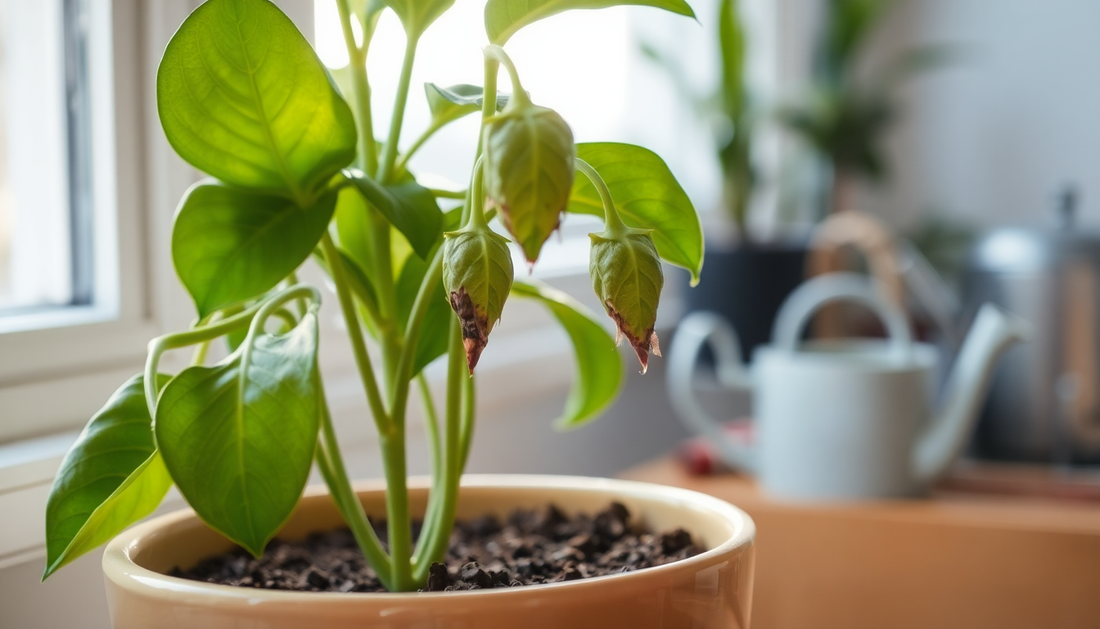
Why Are My Indoor Plants Drooping After Repotting?
Repotting your indoor plants can be an exciting and necessary task, but it can also be a source of stress for your beloved greenery. If you've recently repotted your plants and noticed they're looking a bit droopy, don't worry - this is a common occurrence known as "transplant shock." In this blog post, we'll explore the reasons behind this phenomenon and share some tips to help your plants bounce back.
Understanding Transplant Shock
Transplant shock is the stress that a plant experiences when it's moved from one environment to another. This can happen when you repot a plant, transfer it to a new location, or even when you bring a new plant home from the nursery. During this transition, the plant's roots are disrupted, and it has to adapt to the new soil, water, and light conditions.
When a plant experiences transplant shock, it may exhibit a variety of symptoms, including:
- Wilting or drooping leaves
- Yellowing or browning of leaves
- Stunted growth or lack of new growth
- Delayed flowering or fruit production
These symptoms are the plant's way of signaling that it's under stress and needs time to adjust to its new environment.
Causes of Transplant Shock
There are several factors that can contribute to transplant shock in indoor plants:
Root Damage
When you remove a plant from its previous pot, some of the roots may be damaged or broken. This disrupts the plant's ability to absorb water and nutrients, leading to the drooping and wilting symptoms.
Soil Differences
The soil in the new pot may have a different pH, nutrient content, or texture compared to the previous soil. This can cause the plant to struggle as it adapts to the new growing medium.
Environmental Changes
Factors like light, temperature, and humidity can also play a role in transplant shock. If the new location has significantly different environmental conditions, the plant may have a harder time adjusting.
Transplant Timing
The time of year when you repot your plant can also impact its ability to recover. Plants are generally more resilient to transplanting during their active growing season, such as spring or early summer.
Helping Your Plants Recover
Fortunately, there are several steps you can take to help your indoor plants recover from transplant shock:
Proper Watering
One of the most important things to focus on is watering. Avoid overwatering or underwatering, as both can exacerbate the stress. Instead, monitor the soil moisture and water when the top inch or two of soil becomes dry.
Provide Shade
If your plant is in a sunny location, consider moving it to a spot with partial shade or indirect light. This can help reduce the stress on the plant and prevent further wilting.
Mist the Leaves
Regularly misting the leaves with a spray bottle can help increase humidity around the plant, which can aid in its recovery.
Avoid Fertilizing
Hold off on fertilizing the plant for a few weeks after repotting. The plant needs to focus its energy on establishing its roots in the new soil, rather than on growth.
Be Patient
Recovering from transplant shock can take several weeks or even months, depending on the plant. Be patient and continue to provide the right care, and you'll likely see your plant bounce back.
Preventing Transplant Shock
To minimize the risk of transplant shock, there are a few steps you can take when repotting your indoor plants:
- Carefully remove the plant from its old pot, trying to disturb the roots as little as possible.
- Use a potting mix that is similar in composition to the previous soil.
- Gradually acclimate the plant to its new location by exposing it to the new conditions over a few days.
- Time your repotting for the plant's active growing season, if possible.
- Water the plant thoroughly before and after repotting to help reduce stress.
By following these tips and being attentive to your plant's needs, you can help ensure a smooth transition and minimize the risk of transplant shock.
Remember, every plant is unique, and the recovery process may vary. With patience and the right care, your indoor plants will soon be thriving in their new homes.






No comments